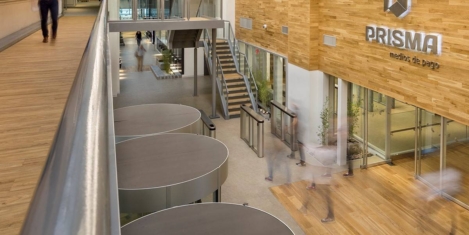November 13, 2018
A quarter of corporate global workforce could inhabit coworking space within five years
 Over the next five years, corporate real estate professionals are set to dramatically increase their use of coworking spaces to house employees, according to a survey conducted at the CoreNet Global Summit in Boston. According to the results, the percentage of employees at respondents’ companies utilising coworking spaces such as that offered by WeWork (pictured) has doubled over the past two years. The survey was conducted by Cushman & Wakefield and CoreNet Global during the course of the three-day summit and was completed by more than 220 corporate real estate executives and industry service providers.
Over the next five years, corporate real estate professionals are set to dramatically increase their use of coworking spaces to house employees, according to a survey conducted at the CoreNet Global Summit in Boston. According to the results, the percentage of employees at respondents’ companies utilising coworking spaces such as that offered by WeWork (pictured) has doubled over the past two years. The survey was conducted by Cushman & Wakefield and CoreNet Global during the course of the three-day summit and was completed by more than 220 corporate real estate executives and industry service providers.











 Over half of home workers say they appreciate the benefits that home working offers but nearly a quarter complain of loneliness too, a new survey from BHSF claims. When asked how working from home makes them feel, the top three responses were: free (50 percent), in control (47 percent) and calm (46 percent). However, a significant number of those surveyed chose more negative words to describe their feelings. Just over a quarter (26 percent) said that working from home made them feel remote, 24 percent felt isolated and 21 percent lonely.
Over half of home workers say they appreciate the benefits that home working offers but nearly a quarter complain of loneliness too, a new survey from BHSF claims. When asked how working from home makes them feel, the top three responses were: free (50 percent), in control (47 percent) and calm (46 percent). However, a significant number of those surveyed chose more negative words to describe their feelings. Just over a quarter (26 percent) said that working from home made them feel remote, 24 percent felt isolated and 21 percent lonely. 




















November 8, 2018
Your relationship with your boss may be playing a role in your stress levels
by Martin Turner and Matthew Slater • Comment, Wellbeing
(more…)